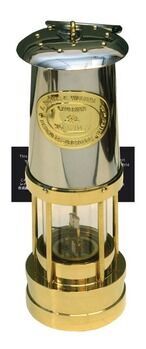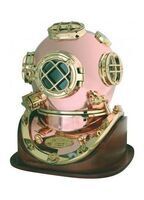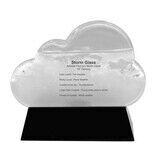| Main Category: Marine Gifts, Souvenirs |
| Supplier: Pro Marine Trade |
| Unit: pcs |
| Product Description: |
This solid brass and stainless steel lamp is made using the traditional Welsh specifications. The Brass and Stainless model was often used in the mines. The base of this lamp is tooled from solid brass because brass does not spark when it hits rock and is therefore the safest metal to use underground. The lamp is functional for personal use and burns lamp oil (kerosene). Each lamp comes individually packaged with a brief history. Height: 250 mm. Diameter: 90 mm. Weight: 1,5 kg.
| « Continue shopping |
















